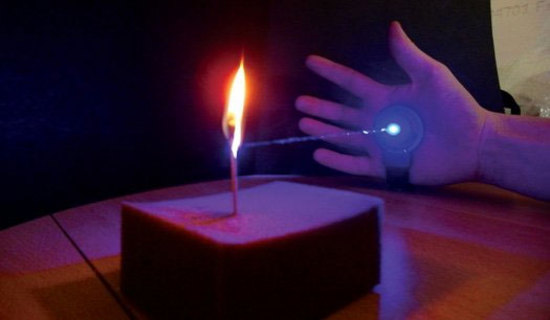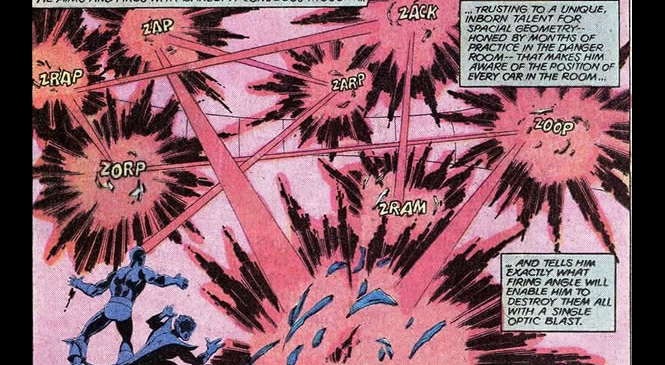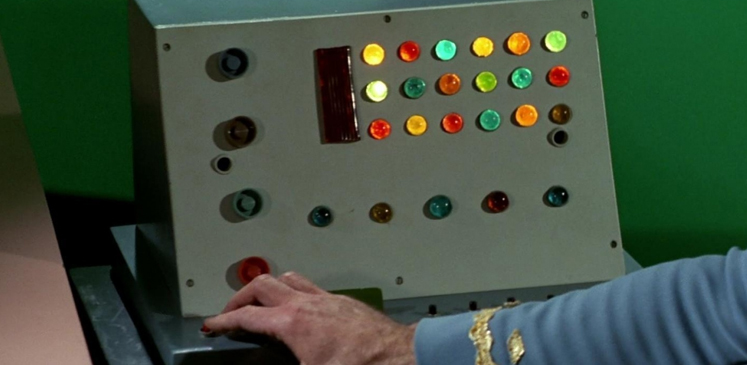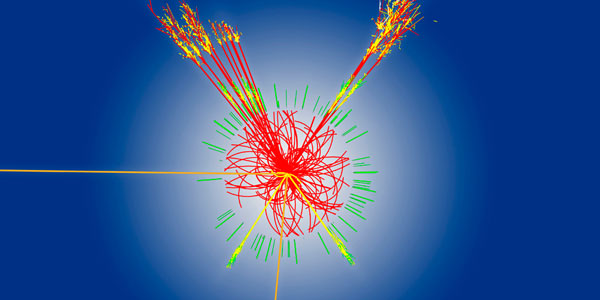Super Heroes Part 3: Having A Blast With Energy

So far, in our quest to create real-life super heroes, we’ve looked at how to make a hero super strong and super tough. Now comes even more fun. Energy blasts!
Energy blasts are fantastic and wonderful things in the comic book world. Instead of having to walk up to someone and punch that person, one can attack someone without the need to get up off the couch. If you can’t have truth and justice, you might as well settle for the American way!
We’ll be looking at two ways to produce those glorious pew-pews. We’ll look at mechanical/cybernetic means as well as biological. That should cover our bases and give us the best blast for our buck. We’ll also look at how to make hero body parts glow. We all like glowing heroes.
ENERGY BLASTS
CYBERNETICS
First of all, let’s look at what kinds of energy weapons a bionic hero can carry. The great thing about cybernetics is that some of these weapons can be interchangeable!
– FLAME THROWER
Let’s start simple. Fire, by all standards, constitutes energy. And shooting fire over a great distance, by all standards, constitutes pure awesomeness! As long as there is sufficient storage for fuel, this one can be a lot of fun!
– LASER
This is a common staple of various science fiction genres, including superhero comic books. Lasers utilize bouncing light through a gain medium between two concave mirrors, one of which is semi-transparent. The result is a beam of concentrated light. The power of portable lasers is still a bit limited. But that is gradually changing. Handheld lasers can now burn light objects and pop balloons. Progress is gradual.
RELATED ~ Lasers, Lasers Everywhere
_______________
– TASER
Then there’s the electrical blast. Unfortunately it’s not as simple as a beta radiation stream or calling lightning from the heavens. Electricity needs something to provide a path for the current to follow. In the case of the Taser, it’s two metal wires connected to metal barbs that attach themselves to a target. A bit inconvenient and cumbersome, but still a fun thing to play with.
– BALL LIGHTNING
Okay, so this is not technically feasible currently since the only one who reportedly created ball lightning was Nikola Tesla. Nobody else seems to know how to do it or what causes it. But since this phenomenon has been photographed in nature, it can be assumed that producing it is not in the realm of the impossible.
– ION BLASTERS
Although the use of ion beams as a blaster is theoretically possible, it’s mainly used in industrial applications. Ion weapons have never been produced in real life … as far as we know. Although Nikola Tesla was working on an ion death ray, whether or not he succeeded is unknown. Ions are basically like atoms, but electrically charged. Either it has extra electrons (negatively charged) or it’s short electrons (positively charged). However, an ion stream can be alpha radiation (helium nucleus with no electrons) or beta radiation (free electron stream), both resulting from radioactive decay. Unfortunately, radioactive decay doesn’t produce enough beta radiation to create a weapon (alpha radiation doesn’t penetrate well). Still, a charged particle stream is well within the realm of possibility.
– ANTIMATTER
There’s also the possibility of a positron stream. A positron is essentially an electron, but with a positive charge instead. It’s less likely than an ion beam. But the theory is proven. When antimatter comes into contact with matter, there is a 100% mass to energy conversion (as opposed to less than 1% for nuclear fission). This is why antimatter is considered vital to the development of interstellar starships.
– DIRECTED LOW-YIELD NUKE
What if there was a miniature nuclear explosion? Okay, so the radioactive aftermath might be a bit nasty. But we’re considering all possibilities. So if there was a parabolic reflector and a blast could be directed at the focus of the parabola, a directed nuclear beam weapon is feasible.

BIOLOGICAL
Now comes what we traditionally think of when we think of super heroes. These are part of the hero, not something strapped on, bolted on, glued, fused, melted, nailed, stapled, or otherwise attached. For the purposes of this article, we’re going to ignore concepts like Chi/Ki, enchantment, and other such things. Instead, we’ll focus on pure biology.
– ELECTRIC SHOCK
The first we’ll mention here is the Electric Organ Discharge (EOD) common among electrogenic electric fish (with the most commonly known being the electric eel). While not the deadly force common to comic books, it’s more than powerful enough to stun an opponent. And it also can’t be used with much range. Electric fish use their abilities in close range underwater. Without the dihydrogen monoxide medium to carry the charge, EOD would only be limited to touch. But maybe that’s all that’s needed in most cases.
EOD organs also tend to make up most of an electric fish’s body. They’re also typically fairly small in comparison to a human. So perhaps the organs in a human can be larger and more effective without making the anatomy look excessively freaky.
– BALL LIGHTNING?

We’ll mention this one again since we’re on the subject of electricity. However, like I said before, this one is sketchy at best. It’s even less likely to do so biologically than with machines. But since it’s not really known how it’s produced, there is always the possibility. And it would add some range to an electrical attack. So even though the likelihood is small, the fact that’s it’s a proven phenomena is enough to leave open the possibility of a hero not unlike Dazzler or Jubilee.
– BIO-LASERS
Imagine Superman’s heat vision. Is something like that even possible? A few years ago, a couple of physicists made biological cells function like lasers. By altering a kidney cell to produce green fluorescent protein (GFP) as a gain medium, introducing blue laser light, and placed it between two mirrors, green laser light was emitted. Perhaps a tapetum could work as a mirror. Although a bit away from Superman or Cyclops, it certainly shows promise. Even more so since it was done with single cells, not an entire organ. And luckily, it works with other cells as well. It would be awful ridiculous having a hero with lasers shooting out of his kidneys.
GLOWING
CYBERNETIC
Now let’s talk about tow to make a bionic or robotic hero glow!
– LOTS OF POWER
It would stand to reason that if a lot of power is generated to generate a blast, then all one would have to do is put a window on it. Unless it’s contained in batteries. Or capacitors. Or …
– ELECTROLUMINESCENCE
Electroluminescence (or EL for short) is what makes an LED glow. A positively-charged semiconductor and a negatively-charged semiconductor are placed side-by-side, and an electrical current is passed over it. EL wire, commonly used in various maker projects, is another application of EL. It’s also fairly low-powered. So if you want your machine to glow, this is probably the best way.
– LIGHT BULB
This one is basically the same as the last one. But it’s much less efficient. Sure, halogens are much better than incandescents, they’re still not as efficient as EL.
BIOLOGICAL
Now let’s talk about how to get warm, squishy organics to glow bright.
– TOO MUCH POWER
Much like “Lots of power” with cybernetics, just having a massive build-up can show through the skin. However, without serious modification to the overall physiology, enough power to cause a glow would probably melt the internal organs.
– BIOLUMINESCENCE
This is what a lot of sea organisms have. Same with fireflies. They have organic means of glowing. There are three ways it can happen:
1 – LUCIFERIN REACTION

Most animals and other organisms that glow use a reaction with the protein Luciferin (“lucifer” being Latin for “light bringer”) and Oxygen catalyzed by the enzyme Luciferase. Some scientists have been trying to produce glow-in-the-dark trees to replace street lights with this method. The particular color produced depends on what type of Luciferin and other proteins involved in the reaction (such as the green flourescent protein (GFP) mentioned earlier).
2 – PHOSPHORENCE
This is when higher-energy light (blue through ultraviolet) are absorbed and cells are “charged up”. When the cells relax, photons are released at a lower energy/frequency (infrared through green). It’s not unlike t-shirt inks that are glow-in-the-dark. They pick up light throughout the day and release it at night. Same thing.
3 – BIOFLUORESCENCE
The only difference with this one is that cells aren’t “charged” and light released later. The light return is immediate. It’s like anything that has a “fluorescent” color. A lot of shallow marine life has this attribute.

There you go. Heroes can have that certain glow and blow people away. This one’s been a blast!



